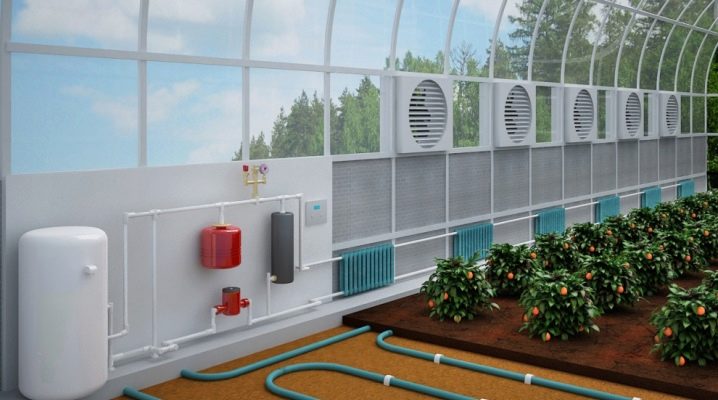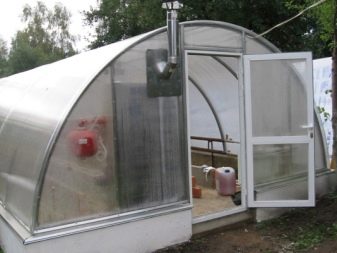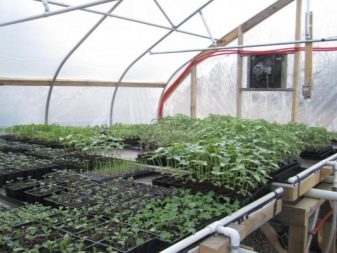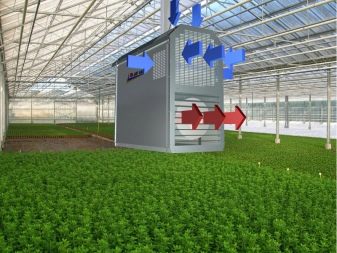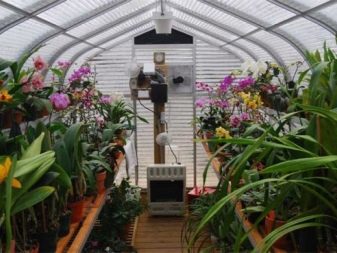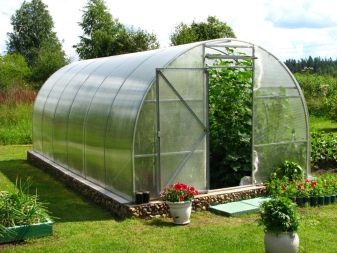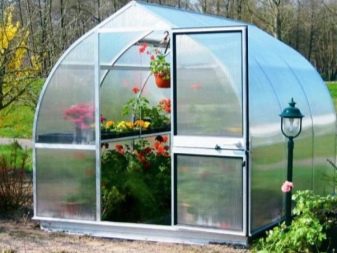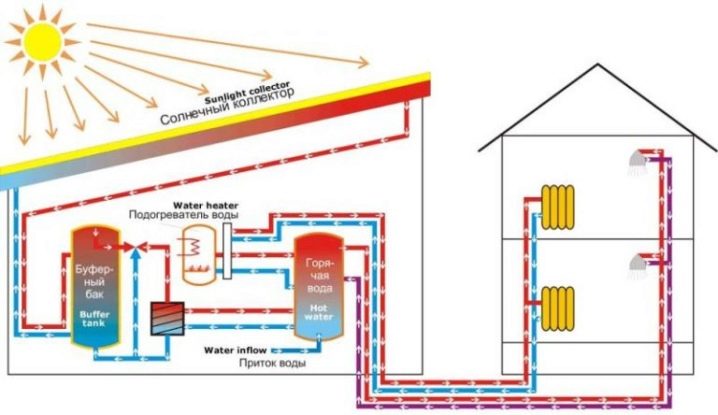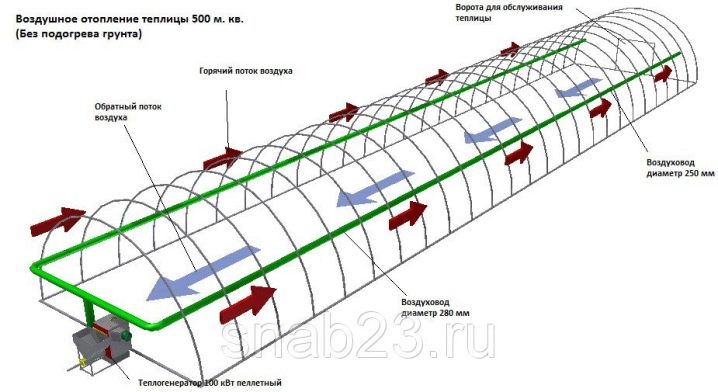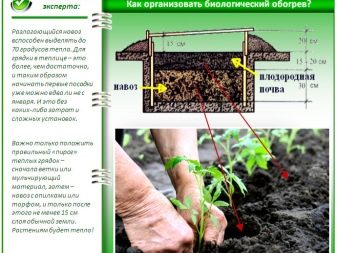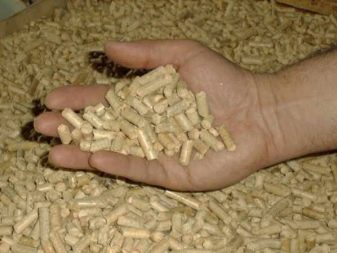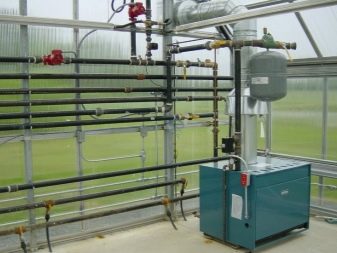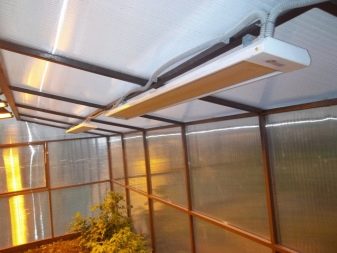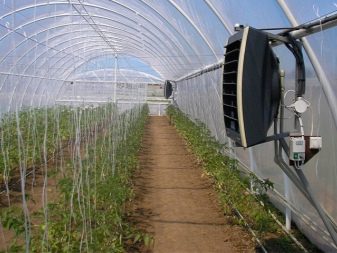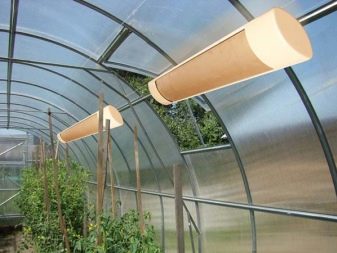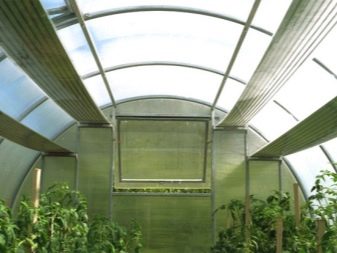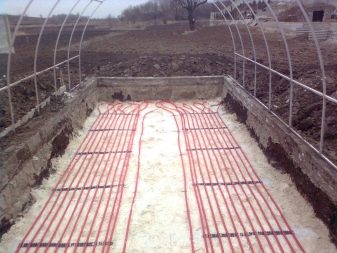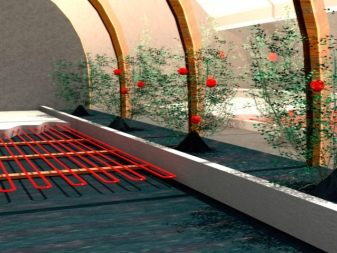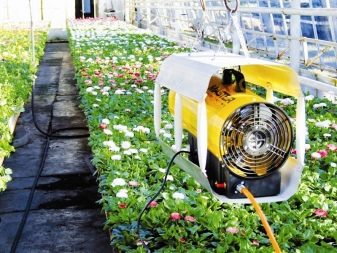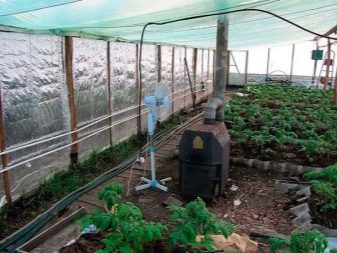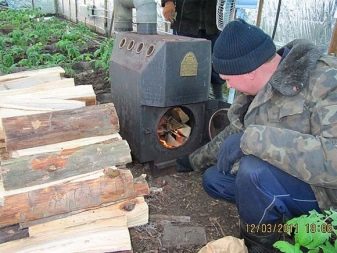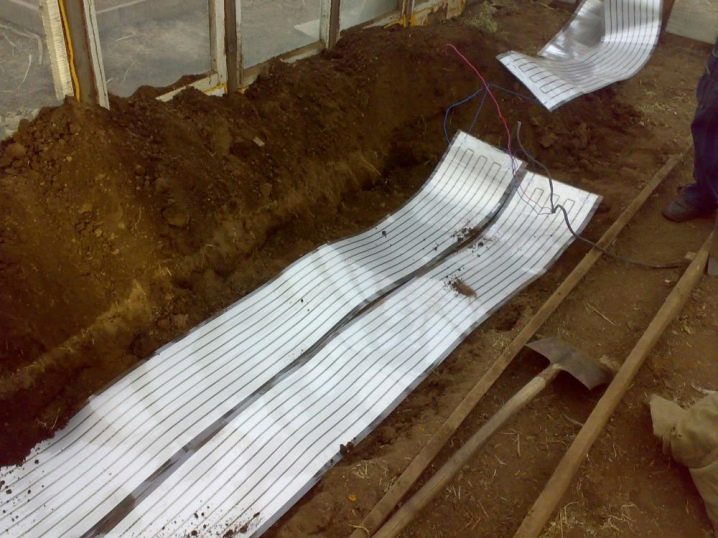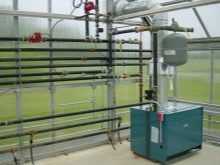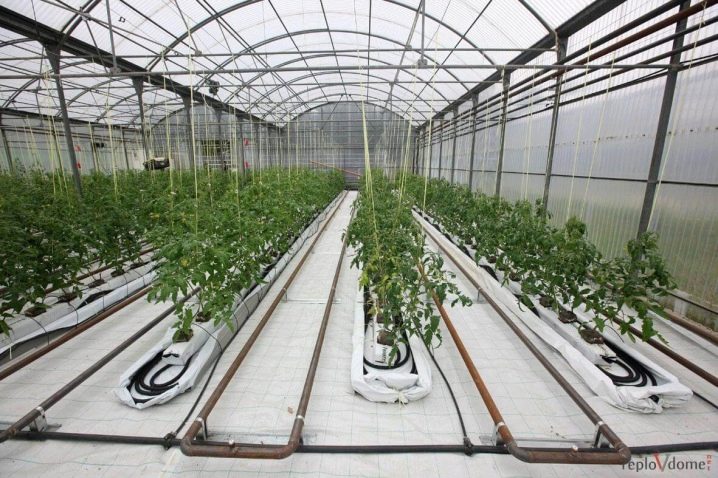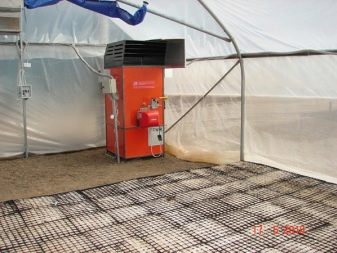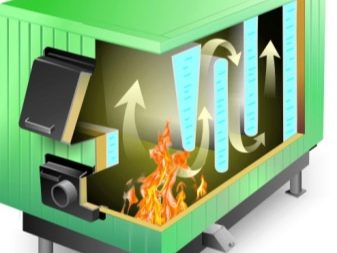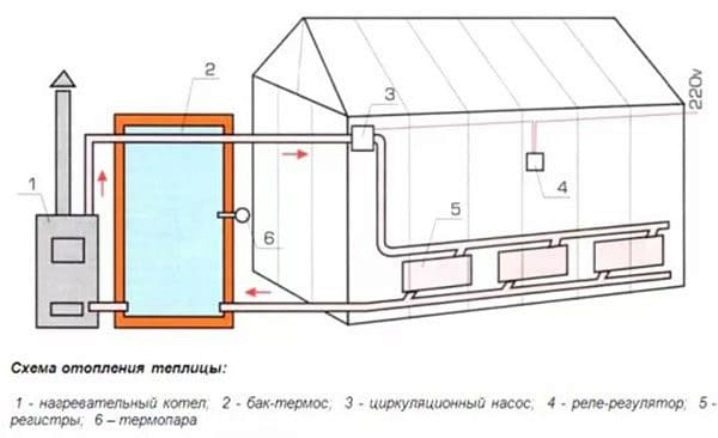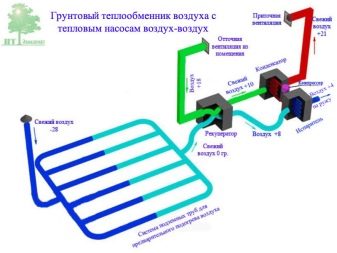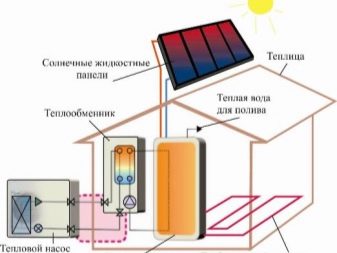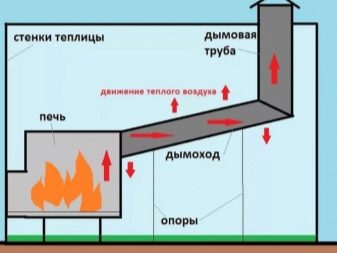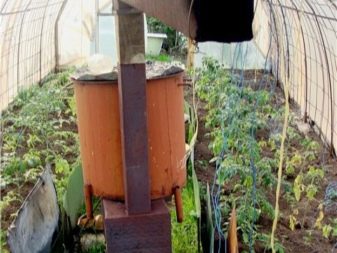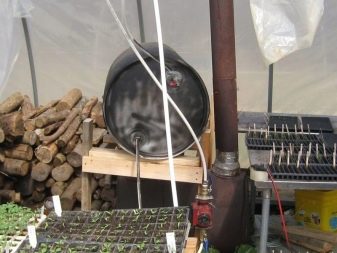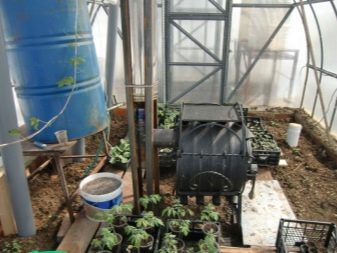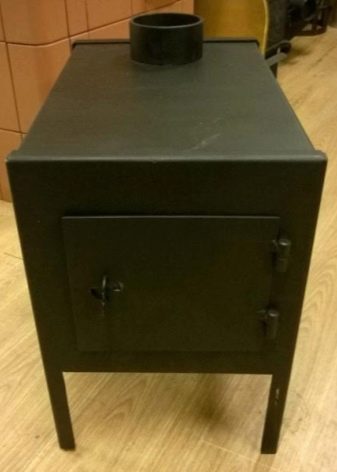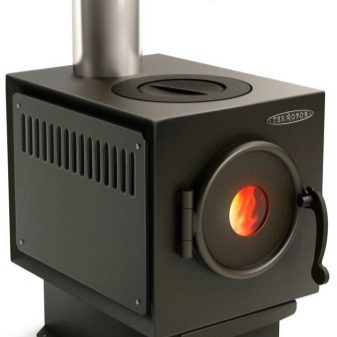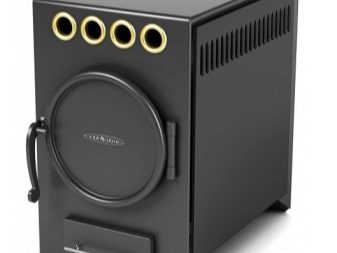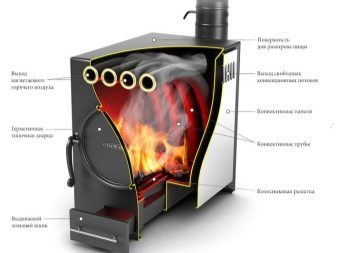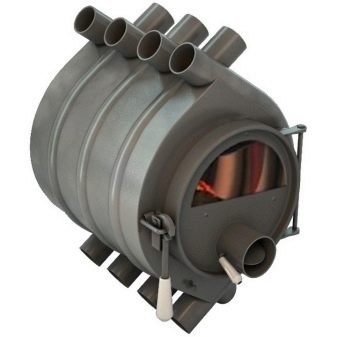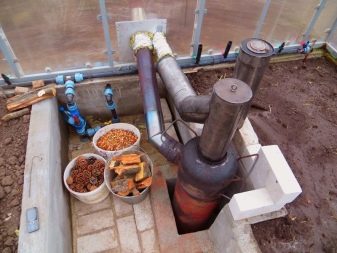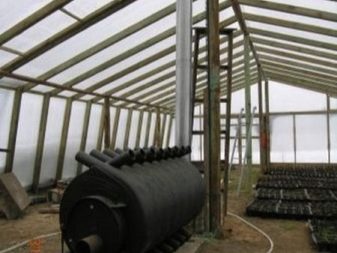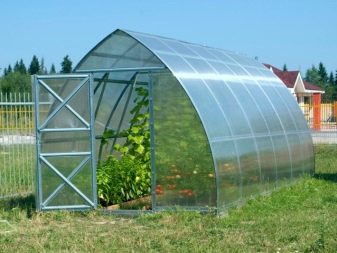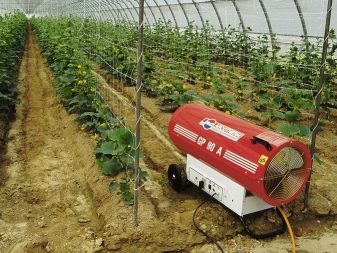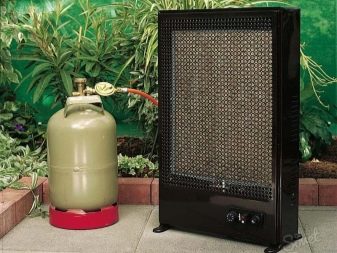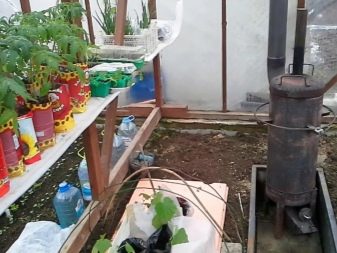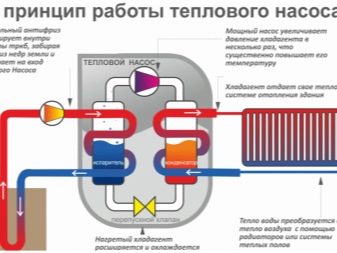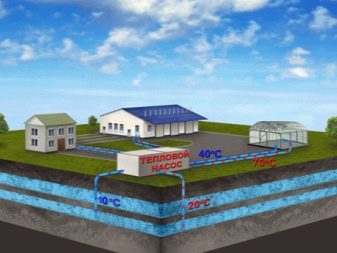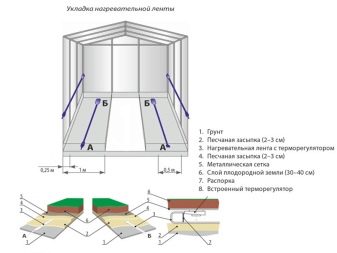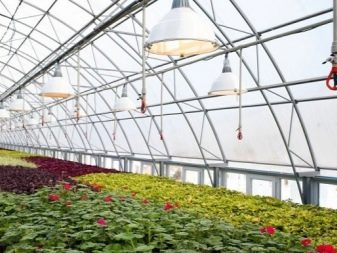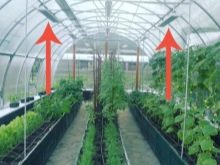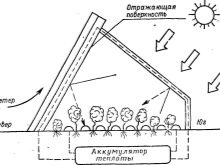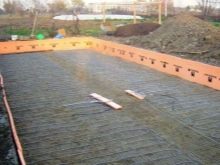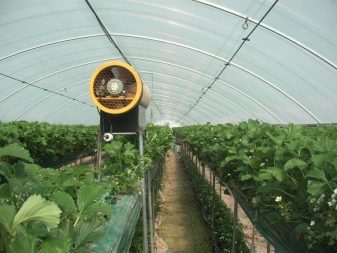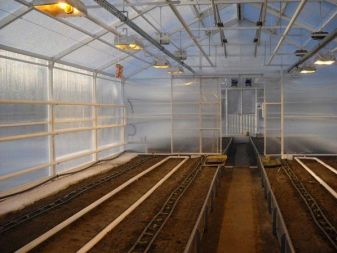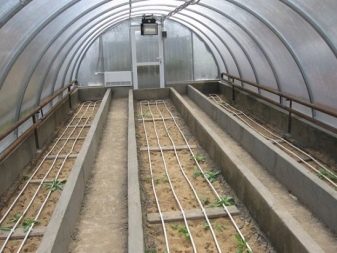Choosing the way of heating greenhouses
A quality greenhouse means a set of technical solutions, materials and structures that help keep enough heat inside. But in many cases (sharp frosts, especially tender plants or the desire to get fresh vegetables and herbs in winter) is not enough. You have to use different heating systems, each of which has strengths and weaknesses. All of them deserve close examination.
Features, Pros and Cons
Heated greenhouse allows you to lengthen the vegetative period of various crops, to reduce the negative impact of the external environment. But in order to fully accomplish this task, it is necessary to choose the most appropriate solution as clearly as possible, focusing on the area of the greenhouse, the area of its use and the number of possible costs.
To understand this, you will have to explore all the major systems.
Sunny
The most natural heating of the greenhouse involves the use of solar energy. Thanks to special technical solutions, this becomes possible even in the dark. A greenhouse heated by the sun must be made of polycarbonate, since this cellular material provides an increased greenhouse effect in comparison with other substances. An alternative is glass, which transmits over 95% of the light flux. The cons of heating in this way is the need to create an arched structure, as well as strictly orient the greenhouse along the axis from east to west.
The problem with the lack of sunlight in the dark, as well as the shortening of daylight hours are solved by equipping the solar collector. These are trenches covered with insulation, covered with sand of large fraction and covered with polyethylene and primer. The difficulty lies in the fact that even with the use of such peculiar batteries in the winter period it will not be possible to achieve the optimal effect.
Airy
With the help of air heating, when the air heated in the boiler enters the room, it is possible to raise the temperature by 20 degrees in 30 minutes.High speed is due to the absence of auxiliary coolants, the level of heat transfer is high. But in areas with harsh winters to make such heating impractical, it is necessary to combine it with steam heating or other methods.
Biofuels
For many centuries and even millennia, farmers have been actively using manure and other organic substances to heat the plants. The essence is simple: chemical decomposition of biological materials leads to the release of a significant amount of heat. In most cases, horse manure is used, which can warm up to 70 degrees for 7 days and stay so hot for several months. If a very powerful warm-up is not needed, manure is mixed with straw. Less powerful methods are the use of sawdust, bark and food waste.
The weak points are also obvious: it’s not too pleasant to work with such substances, and if the winter is delayed, even four months of heating with horse manure may not be enough.
Gas
If a gas stove is installed in the garden house, it is logical to think about heating the greenhouse with the help of cylinders or pipes.This is a convenient and practical solution, but it has a number of disadvantages. It’s impossible to create such a heating system with your own hands, it is imperative to register and prove the safety of the gas inspection authorities.
Burning natural gas results in:
- overmoistening of air in the greenhouse;
- increase in carbon dioxide concentration;
- depletion of air with oxygen.
It is possible to compensate for these problems through ventilation, but creating it is not as easy as it seems, and for a winter greenhouse, the excess air flowing in from the outside negates the advantages of heating. In addition, the heating of large areas with natural gas is a rather expensive thing. Monorail heating option involves the formation of a primary ring encircling the building around the perimeter and delivering heat from the source to the heating circuit. In fact, this is a large annular water supply, which is connected to a small circulating pump. When the water in the circuit is cooled, the boilers transfer an additional heat pulse to it.
Electric
Heating greenhouses with electricity is quite efficient and does not require significant efforts from landowners.According to professionals, the best way to work is to use infrared heat sources that do not waste energy on heating the air, directly transferring it to the soil and plants. The downside of this decision is the technical complexity, the inability to do everything properly without the help of qualified installers. But you can vary the heating in different parts of the room, creating the most attractive conditions for each group of cultures.
Heating panels can generate heat using electricity or natural gas. Such devices can be mounted both on the ceiling and on the wall frame. The electrical view of the panels is advisable to use in greenhouses up to 25 square meters. m. Warm up a larger greenhouse with it harder. Have to put a powerful highway and spend a lot of current.
Infrared emitters powered by gas burners are more practical, but they have the same drawbacks as gas boilers.
Infrared heating:
- uniform over the entire area;
- eliminates overdrying of the air;
- prevents the development of dangerous microorganisms;
- suppresses the spread of dust.
Film greenhouses need to be heated more than those made from polycarbonate, because the heat loss in them is significantly higher. The heating cable is attractive because it does not take away the useful area from the greenhouse. In fact, it is an analogue of a warm floor in houses and apartments. Using the cable method, it is easy to give the soil the temperature needed at a particular growth stage: every gardener knows that sprouting and fruit production are different things. It is possible to lay a cable without any help, temperature control is very easy, current consumption is small. But you have to mount the cable system immediately, take into account its features in the design.
Carbon cord is more attractive than other cables due to the fact that it has zero thermal inertia, does not give thermal jumps and provides a smooth change of conditions. It is compatible with any thermostat, and also allows you to create a contour of any length or even change it.
The electric heat gun will allow to warm the greenhouses without mounting complex structures. You can start the system into operation only after purchase, installing it on the ceiling, so as not to damage the landings.The fan prevents air masses from accumulating under the ceiling. Along with electrical products, there are also diesel and running on methane; Some of the options are able to work in a dusty room with excessive humidity. Outside the connection with the installed equipment, it is necessary to carry out a thorough calculation of its characteristics and form drawings (diagrams).
The benefits of water
Very often, large-sized greenhouses are heated by water-type apparatus. It is necessary to study its characteristics, starting with the parameters of the heater.
Boiler selection
Heating by gas is considered universal and economical by most users, automation keeps the temperature bar without human intervention. It is possible to heat the greenhouse in such a way relatively inexpensively, and the removal of flue gases is carried out through coaxial chimneys (the outer layer barely warms up).
Another affordable way to heat a greenhouse is a solid fuel boiler, various modifications of which can burn:
- firewood;
- coal;
- pellets.
The only problem is that automating solid fuel installations is very difficult,and without constant care they will not fulfill their task. Liquid heating in gardening is practiced very rarely.
The undoubted advantages of electric water heating are:
- almost complete automation;
- compact size;
- the ability to vary day and night modes;
- minimum level of noise;
- high level of security (if done correctly).
However, electricity is quite expensive, and if the device is deformed or the insulation of the wires is damaged, there is a high risk of electric shock. When gas is conducted to the site, it is advisable to use them, regardless of the size of the installed greenhouse. If the greenhouse will be used in year-round mode, and its area exceeds 50 square meters. m, it makes sense to use a solid fuel boiler. When using available firewood, expenses incurred will be reimbursed for 12-36 months.
Device
The scheme of the heating system in the greenhouse will be able to work correctly only with proper calculation of the number of working batteries. For greenhouses below 3 m orient on the area, the heat output is determined by multiplying the area by 120.The calculated result is divided by the power density of the unit section to determine their total number. Radiators need to be evenly placed on the territory. Ideal greenhouse batteries are very low, they will allow to warm the air near the ground and the lower part of the trunks (shoots).
In addition to boiler systems and batteries, they use:
- pipelines;
- pumping devices;
- tanks for liquid expansion;
- devices for mechanical water treatment;
- balancing valves.
Several circuits can be heated only with the help of distribution. Solid fuel boilers are supplemented with heat accumulators.
System installation
Solid fuel heaters are placed on the threshold or in a separate room. Devices that burn gas or consume current can be supplied directly in a heated room. Floor installation is made on a lining of concrete or paving slabs, make a pillow from sand below. Solid fuel and gas appliances must be connected to the chimney.
In the first case, a chimney in the form of a sandwich based on stainless steel is recommended.
The installation of radiators is always wall-mounted, each battery needs to be supplemented with a Mayevsky valve and valves that open or block access of the liquid inside. Typical pipes have a diameter of 2 to 2.5 cm. If artificial circulation is provided for in the heating system, it is advisable to install a cylindrical membrane tank for expansion, as tight as possible. Such a device can be installed at any convenient point, but most often in the area from the outlet from the boiler to the circulation pump.
Be sure to provide a security group that includes:
- pressure gauge;
- safety valve;
- device for air discharge;
- steel collector;
- a coupling through which all other elements are connected to the main part of the system.
This group is mounted on the output where the water temperature is highest. But the pump that provides circulation is required to be placed on the return pipeline. Before the pumping unit is required to put a rough mechanical cleaner. After assembly, the system is pressurized with air, which makes it possible to detect violations of the tightness of the system and assembly defects. Checking is carried out with soap suds.When the pressure created by the compressor is equalized, bubbles appear unacceptable at the joints and nodes.
Oven
In addition to solid fuel boilers, there is another way to use solid fuel in greenhouses - these are various furnaces made of metal or brick.
Advantages and disadvantages
A brick is harder to heat, but it also loses heat more slowly than steel. Due to this, to maintain a stable temperature in the greenhouse will be much easier. A brick oven does not desiccate the air, and its humidity is extremely important for plants. To compensate for the shortcomings of an iron stove, you can install an additional circuit from registers or radiators inside.
Metal heaters also have a strong side - they are preferable for greenhouses operating in spring and summer:
- such designs can be installed for a short time;
- no need for a complex foundation;
- the oven takes up relatively little space;
- the cost of the product is less than the brick version;
- All work can be performed without recourse to professionals.
Yes, a metal furnace cannot be automated, but with constant care of plantings during the vegetative season, this circumstance does not play a special role.
Selection and installation of the furnace
The chimney system at the metal furnace must be installed at an angle of at least 15 degrees. Such a step increases the heating force. The pipe should be made of metal, it is not necessary to isolate it, except for the intersections with the roof or wall, as protective boxes are placed there. Before installing the stoves, you need to consider their stability - if the hearth overturns, the greenhouse may be damaged, and in the worst case, a fire will start.
There are many different designs, but one of the best is deservedly considered to be a stove “Vesuvius-mini” stove. This is a compact and cheap stove, the device of which is maximally simplified. With the help of the device, the thermal power of which is 4 kW, you can warm the greenhouse with a total area of 25-30 square meters. m. Inside the steel case, firewood is burned, and from above you can heat water. Use "Vesuvius mini" is acceptable and as a plate.
“Cinderella” is also a compact device, made of a resistant to strong heating alloy. With the help of side convectors, the distribution of hot air is improved, the total heat output is 6 kW, the heated area can be up to 60 square meters. mThe operation of the furnace is facilitated by a viewing window in the door; a burner is installed on top to warm the water. Firewood or household waste is placed in the oven.
The advantages of the “Normal” system are increased energy production (it warms up hotbeds with dimensions of 60-80 sq. M), as well as special protective covers that prevent the side walls from warming to dangerous values. Designers took care of reliable locking the door to prevent smoke.
In turn, if you choose the Klondike HB-100 stove, you can ensure a long-term supply of heat to the outside - up to 10 hours in a row. And for those who wish to drown the greenhouse with wood processing waste, the cardboard should look at the construction of the “Breneran Aquathen”. It is a gas generator with a water circuit.
For your information: no stoves work with oil, of course. But heat guns can quite use it.
Whatever the owners choose, it is necessary to prepare a strong foundation for which they lay tiles for pavements, bricks, or simply tamp the ground. The best place to install the furnaces is in the middle of the greenhouses, as this makes the heating more uniform. If there is a capital wall, the reverse wall of the stove must be leaned against it.
The connection of the chimney to the smoke nozzles is based on heat-resistant sealants.
Criterias of choice
In principle, the heating of the greenhouse is possible with the help of a variety of furnaces and heaters, if only the generated power allows you to create the desired temperature on a certain area. But if we speak not about the “principle”, but about the practical use of certain solutions, you need to think about very different things. So, the best projects of heating systems will be useless if their size does not allow the use of a specific apparatus in a particular room. The power of the devices varies not only according to the area, but also by the material - it has long been known that through polyethylene heat loss is higher than through polycarbonate.
The next important criterion is the amount of costs, and it is necessary to take into account both the costs of the component parts, their installation, and the subsequent use. Certain types of heaters are completely impractical in small greenhouses, others are set at the lowest price, but during operation they consume a large amount of fuel or energy.
Steam heating is justified if you can connect the greenhouse to the heating system of the house. It is desirable to warm the pipes properly, and you will have to create a significant margin of boiler power. It is undesirable to use such a system when the distance from the dwelling to the greenhouse is more than 10 m. An autonomous steam heater can be installed in the greenhouse itself, the circulation of water is provided by special pumps.
It is recommended to use solid fuel boilers and stoves in early spring.because they are good at resisting frost. Boilers are better than stoves, because they do not require frequent fuel addition, it is consumed very efficiently. Solid fuel boilers should not be placed directly in the greenhouse, so as not to overdry the air, as a last resort, you have to put a number of humidifying agents.
Geothermal heating of the greenhouse is practiced only occasionally, because heat pumps are expensive, and it is very difficult to mount them. It is advisable to create an integrated heating system, which simultaneously warms up not only the greenhouse, but also the house. Important: heat pumps are needed for liquid heating systems of the soil, they are not capable of supplying water to radiators.
Solar battery is a vacuum tube, which is laid in a glazed panel.
Water circulates through them, while it warms up quite strongly and enters a special highway. Solar panels (or, in other words, photovoltaic panels) are unsuitable for heating greenhouses, as they are designed to generate electricity. It is advisable to use, along with collectors, gas boilers, stoves, heat pumps and other means of heating in order to insure themselves in the dark.
Thermal tape in the greenhouse is used quite often. The composition of this glass thread, supplemented by a thermostat. Inside there are eight nichrome veins surrounded by impermeable rubber. The device operates stably only in the temperature range from 15 to 20 degrees, which allows current to be consumed only as needed. Each part of the plant is heated equally, the only alternative that can achieve the same effect is manure heating. But the tape is better than it already because it helps to warm the greenhouse in almost any weather, and not only in the warmer months.
With the help of the tape prevents the death of plants when frosts suddenly began.
Quite often, a lamp or even a row of lamps is used for heating. Infrared heating of this type is directed from the top down and effectively acts on the entire plant, and also warms the soil layer. According to research, such systems increase germination by 30-40%.
What are popular?
If you pay attention to the most popular solutions in the heating of greenhouses, it is easy to understand that they often try to do without electricity and without gas. After all, solid fuel heat sources are installed easier than others. Furnaces according to the Buleryan system are considered the least convenient, since they cannot be dispensed with regularly adding firewood manually. If these difficulties do not frighten, the low cost of construction and efficient heating of the greenhouse space make such a choice fully justified.
The second line in the rating of demand is occupied by three options at once:
- infrared devices;
- solar energy storage devices;
- cable warming facilities.
All such options are installed cheaply and simply, can work without the constant attention of the person.But it is necessary to come to terms with the increased cost of energy obtained by such methods - to use mineral fuel more economically.
The next position is occupied by heat guns and heat pumps.
Both types of equipment are maintained quite simply, suitable for automatic heating. The problem is that they can not be called economical and the cost of the purchase, installation of equipment is justified on average in 10 years.
Rail heating pipelines, heated by gas, are also quite widely sought after. Instead of the boiler, you can use spaced around the perimeter of the burner or heaters. Such a device provides a uniform flow of heat.
Not all resort to electric heating, but if the electricity supply is quite stable, and the greenhouse is planned to be used even in winter, this step is deservedly considered effective. It is difficult to find other devices that would allow to regulate the temperature with the same ease.
How to make water heating in the greenhouse with your own hands, see the following video.
